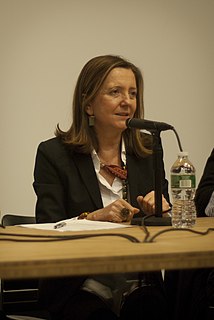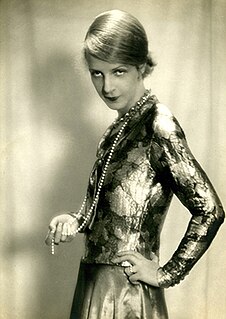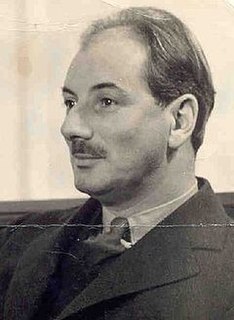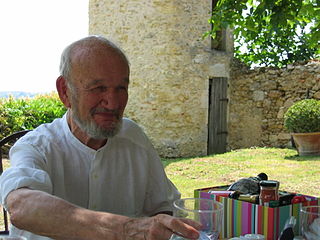 W
WRosemarie Haag Bletter is a German-born American architectural historian, university professor, writer, and lecturer.
 W
WBeatriz Colomina is an architecture historian, theorist and curator. She is the founding director of the Program in Media and Modernity at Princeton University, the Howard Crosby Butler Professor of the History of Architecture and Director of Graduate studies in the School of Architecture.
 W
WCarl Wilbur Condit was an American historian of urban and architectural history, a writer, professor, and teacher. He was professor at Northwestern University 1945–82. He wrote numerous books and articles on the history of American building, especially Chicago, Cincinnati, and the Port of New York. He founded the History of Science Department at Northwestern University, where he taught for over 30 years. His research specialty was the architecture of Chicago, Illinois, and he lived in Chicago most of his life, having moved there in 1945 in order to study its urban and technological development.
 W
WBarbaralee Diamonstein-Spielvogel is an American preservationist, historian, author, and television producer. She is an advocate for the preservation of the historic built environment. She has worked in the fields of art, architecture, crafts, historic preservation, fashion, and public policy in the U.S. She is the author of 24 books, numerous articles and essays, and recipient of many honors and awards. She is a former White House Assistant, the first Director of Cultural Affairs in New York City, and the longest serving New York City Landmarks Preservation Commissioner.
 W
WAndrew Scott Dolkart is a professor of Historic Preservation at the Columbia University Graduate School of Architecture, Planning and Preservation (GSAPP) and the former Director of the school's Historic Preservation Program. Professor Dolkart is an authority on the preservation of historically significant architecture and an expert in the architecture and development of New York City. He was described as someone who is "without peer among New York's architectural researchers" by architectural critic Francis Morrone and he has written extensively on this topic. Before joining the faculty at Columbia he held a position at the New York City Landmarks Preservation Commission and worked as a consultant. Dolkart holds a Bachelor of Arts degree from Colgate University (1973) and a Master of Science degree in Historic Preservation from Columbia University (1977); he is a popular lecturer and walking tour guide.
 W
WMichael Dwyer is an American architect known for renovating historic structures and designing new ones in traditional vocabularies, and considered to be an advocate of classical architecture. He was the editor of Great Houses of the Hudson River (2001), and the author of Carolands (2006).
 W
WJohn Maxwell "Jake" Jacobus Jr. was Leon E. Williams Professor of Art History, emeritus, at Dartmouth College, New Hampshire. He was a specialist in modern art and architecture and particularly the art of Henri Matisse.
 W
WMark Jarzombek is a United States-born architectural historian, author and critic. Since 1995 he has taught and served within the History Theory Criticism Section of the Department of Architecture at MIT School of Architecture and Planning, Cambridge, Massachusetts, United States.
 W
WCharles Alexander Jencks was an American cultural theorist, landscape designer, architectural historian, and co-founder of the Maggie’s Cancer Care Centres. He published over thirty books and became famous in the 1980s as theorist of Postmodernism. Jencks devoted time to landform architecture, especially in Scotland. These landscapes include the Garden of Cosmic Speculation and earthworks at Jupiter Artland outside Edinburgh. His continuing project Crawick Multiverse, commissioned by the Duke of Buccleuch, opened in 2015 near Sanquhar.
 W
WSidney Fiske Kimball was an American architect, architectural historian and museum director. A pioneer in the field of architectural preservation in the United States, he played a leading part in the restoration of Monticello and Stratford Hall Plantation in Virginia.
 W
WReinhold Martin is an American architectural historian and professor. He currently serves as Professor of Architecture in the Graduate School of Architecture, Planning, and Preservation at Columbia University, where he directs the Temple Hoyne Buell Center for the Study of American Architecture. He is also a member of the Institute for Comparative Literature and Society and the Committee on Global Thought at Columbia. Until 2008, Martin was a partner in the architectural firm Martin/Baxi Architects with Kadambari Baxi.
 W
WSibyl Moholy-Nagy was an architectural and art historian. Originally a German citizen, she accompanied her second husband, the Hungarian Bauhaus artist László Moholy-Nagy, in his move to the United States. She was the author of a study of his work, Moholy-Nagy: Experiment in Totality, plus several other books on architectural history.
 W
WCharles Herbert Moore was an American university professor, painter, and architectural historian, known as the first director of Harvard University's Fogg Art Museum. He was one of many followers of the works of John Ruskin, and was known as an American Pre-Raphaelite. In 1871, Moore left painting to begin teaching at Harvard, where he led its new art department. There Moore was among the first art historians at an academic institution in the United States. After retirement, Moore moved to Hampshire, England. He wrote many books on medieval and Renaissance architecture there, and died in Hampshire in 1930.
 W
WLewis Mumford was an American historian, sociologist, philosopher of technology, and literary critic. Particularly noted for his study of cities and urban architecture, he had a broad career as a writer. Mumford made signal contributions to social philosophy, American literary and cultural history and the history of technology. Mumford was influenced by the work of Scottish theorist Sir Patrick Geddes and worked closely with his associate the British sociologist Victor Branford.
 W
WLeland M. Roth is a leading American architectural historian who is the Marion D. Ross Distinguished Professor of Architectural History emeritus in the Department of the History of Art and Architecture in the College of Design at the University of Oregon.
 W
WVincent Joseph Scully Jr. was an American art historian who was a Sterling Professor of the History of Art in Architecture at Yale University, and the author of several books on the subject. Architect Philip Johnson once described Scully as "the most influential architectural teacher ever." His lectures at Yale were known to attract casual visitors and packed houses, and regularly received standing ovations. He was also the Distinguished Visiting Professor in Architecture at the University of Miami.
 W
WIsaac Newton Phelps Stokes was an American architect. His early architectural career was in partnership with John Mead Howells. Stokes was a pioneer in social housing who co-authored the 1901 New York tenement house law. For twenty years he worked on The Iconography of Manhattan Island, a six volume compilation that became one of the most important research resources about the early development of the city. His designs included St. Paul's Chapel at Columbia University and several urban housing projects in New York City. He was also a member of the New York Municipal Arts Commission for twenty-eight years and president for nine of these.
 W
WFranklin Toker is a professor of the History of Art and Architecture at the University of Pittsburgh and the author of nine books on the history of art and architecture, ranging from the excavations he conducted under the famed Cathedral of Saint Maria del Fiore, Florence to 21st century American urbanism. A past president of the Society of Architectural Historians, in 1979 Toker was the winner of a Guggenheim Fellowship in Architecture, Planning, & Design.
 W
WNorval Crawford White was an American architect, architectural historian and professor. He designed buildings throughout the U.S., but he is best known for his writing, particularly the AIA Guide to New York City. White was widely considered to be one of the great figures of New York architecture.
 W
WGwendolyn Wright is an award-winning architectural historian, author, and co-host of the PBS television series History Detectives. She is a professor of architecture at Columbia University, also holding appointments in both its departments of history and art history. Besides "History Detectives", Dr. Wright's specialties are US architectural history and urban history from after the Civil War to the present. She also writes about the exchange across national boundaries of architectural styles, influences, and techniques, particularly examining the colonial and neo-colonial attributes of both modernism and historic preservation.